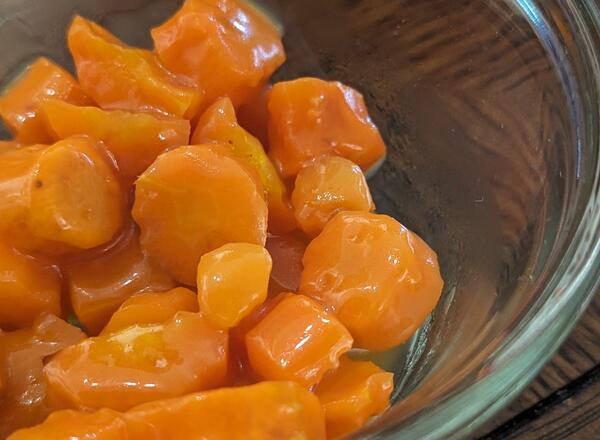
I so enjoy the big variety of citrus that comes to stores in winter. Stocked with more than oranges, lemons, limes, and grapefruit, I'm seeing mandarins (including tangerines, clementines, and satsumas), tangelos, ugli fruit, oranges with fun colors (like cara cara and blood oranges), and pomelos. They all have familiar citrus flavors, but each is unique.
Nutritionally, all citrus are similar. They are a source of carbohydrates, fiber, and vitamins and minerals, including vitamin C, folate, and potassium. They are not a significant source of sodium, fat, or protein.
Buy
Citrus comes in several forms: fresh, canned, and juiced (fresh, frozen, and shelf-stable).
- Fresh: Shop for citrus in winter months when they are in-season and their quality is best. Look for fruit that is firm to the touch, with a slight give. Avoid fruit that is overly soft or molding.
- Canned: Buy brands that are packed in 100% juice or light syrup instead of heavy syrup. Some brands may pack fruit in alternative sweeteners, if you prefer those.
- Juiced: Buy brands that are 100% juice, instead of fruit juice cocktails or juice drinks that add sugar.
Price
Fresh oranges average $1.21 per pound and fresh grapefruit $1.17 per pound, according to the U.S. Department of Agriculture. While USDA did not price canned citrus, these are great to buy out-of-season when fresh is less available or of not good quality.
Store
- Fresh citrus can be stored at either room temperature or in the refrigerator, though refrigeration will keep citrus at peak quality for longer. Unpeeled citrus can be stored at room temperature and may last a week or more. Check fruit daily for softness and eat as soon as possible. If mold grows, toss out the fruit.
- Once fresh citrus is peeled or once you open canned citrus containers, refrigerate any extra in a covered container for up to a week. Shelf-stable juices will need to be refrigerated once opened.
Prepare
Wash fresh citrus under cool water before peeling. A knife may be needed to peel thick-skinned citrus, like pomelos. To zest citrus, wash fruit and remove only the colored skin with a fine grater and stop before the pith. The white pith underneath the peel is bitter tasting.
Preserve
Can jars of Oranges and Grapefruit at home with instructions from the National Center for Home Food Preservation. You can also freeze and dehydrate citrus.
Eat
Citrus, such as oranges and tangerines, are tasty to eat with a meal or as a snack. Both sweet citrus and sour citrus, like lemons, are great in savory recipes, desserts, and marinades.
Show us what citrus you're enjoying lately! Take a picture and tag Illinois Extension on Facebook, Instagram, or Twitter.
Post originally published in 2016; content updated in 2024.
About the Author: Caitlin Mellendorf is an Illinois Extension Nutrition and Wellness Educator serving DeWitt, Macon and Piatt Counties in Central Illinois. She is a Registered Dietitian and her work focuses on helping community members gain the knowledge, skills and tools to live healthier, more nutritious lifestyles. This includes providing programs and answering questions about heart health, diabetes, food safety, food preservation, grocery shopping and cooking. You can reach Caitlin by email at chuth2@illinois.edu or call 217.877.6042.


